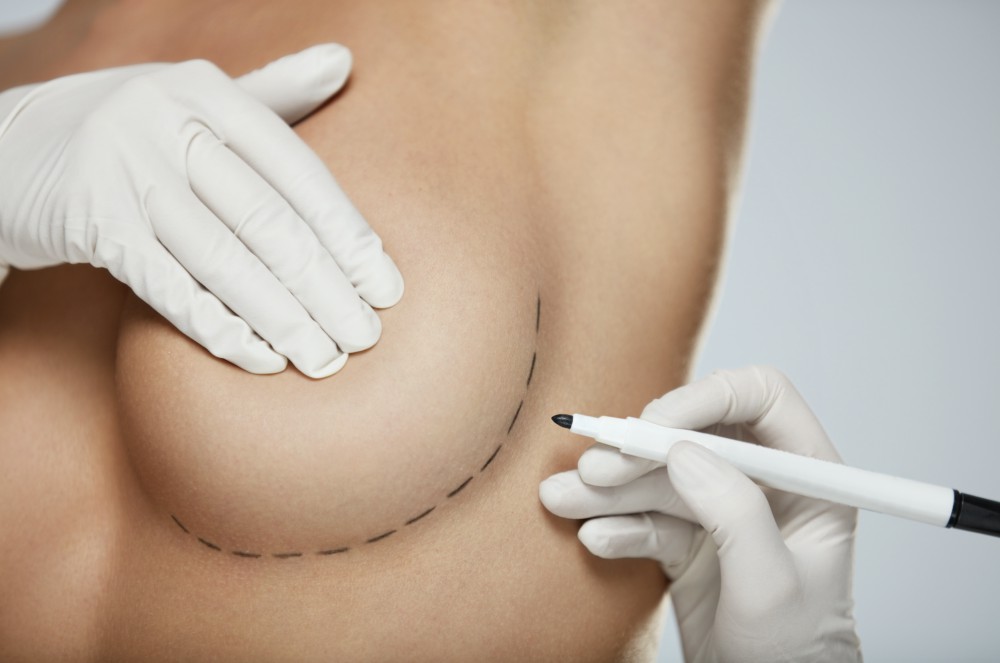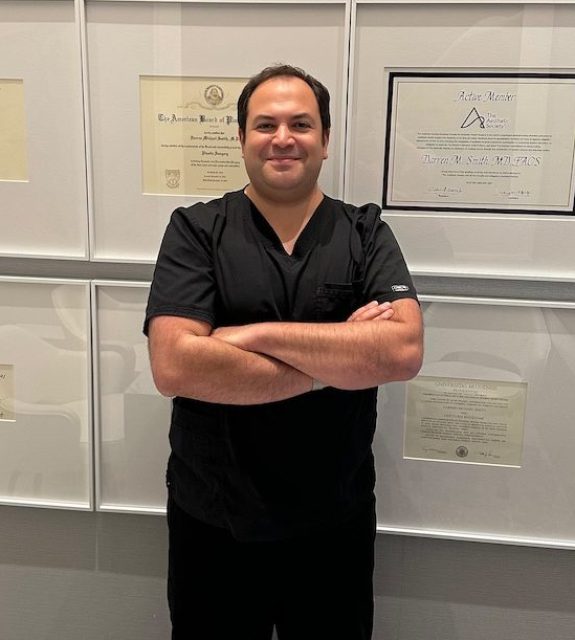Ivy League-educated and board-certified plastic surgeon Dr. Aviva Preminger specializes in cosmetic and reconstructive surgery of the face, breast, and body. Training at some of the country's finest institutes including Columbia University, Dr. Preminger has expert knowledge in a wide range of cosmetic and reconstructive procedures. Dr. Preminger sat down with Haute Beauty to discuss common questions regarding breast augmentation procedures.
What amount of scarring should a client expect with breast augmentation?
There is minimal scarring from a breast augmentation as we use very small incisions to insert the implant. The scar is usually less than 4 centimeters long and well hidden under the breast fold, at the border of the areola (pigmented skin around the nipple), or in the underarm. I use a no-touch insertion technique with a Keller funnel that allows even large implants to be inserted via a very small incision. I also believe in using a rigorous post-surgery scar management program with silicone scar products. It takes six months to a year for the scar to fully mature.
What types of incisions are common for a breast augmentation procedure?
The four potential incisions for breast augmentation are inframammary (under the breast fold), periareolar (at the border of the breast skin and the pigmented area around the nipple), in the axilla or underarm, or in the belly button. A belly button incision is only an option for saline implants. I generally prefer the incision under the breast fold or at the edge of the areola as these are well hidden even in a bikini.
What are the main risks associated with breast augmentations?
The risks associated with breast augmentation include bleeding and infection. These are risks of all surgical procedures. We minimize these risks by providing patients with a list of medications and supplements to avoid as they may increase bruising and bleeding. We also use intravenous antibiotics and wash out the breast with triple antibiotics at the time of surgery. Other risks of breast augmentation are implant associated such as rupture and malposition. Implants last ten to fifteen years on average. Some patients can develop scarring around an implant. This is known as capsular contracture. Recently, there is data on a breast implant associated lymphoma known as ALCL. It is rare.
What are some of the options for breast implants?
Traditionally, the options for breast augmentation were round saline and silicone implants. Silicone implants feel more natural. We now have cohesive or gummy bear gel implants, and shaped implants available. There is also a newer implant known as the IDEAL implant. It is a saline implant with a double shell that makes it feel more natural like a silicone implant.
Can a fat transfer breast augmentation lift breast?
Fat is a great option for augmentation of the breast if the patient has enough fat stores to harvest via liposuction. Most patients will get some lifting from the fat injections or from any augmentation in general, but augmentation of any kind will not substitute for a breast lift if the patient has a lot of sagging/ptosis. Some patients benefit from a combined augmentation with an implant or fat as well as a lift. I have also combined using a small implant and fat for a more natural feel.
What follow-up procedures can be expected after a breast augmentation?
I generally tell patients that getting breast implants is a bit like buying a car. They will certainly serve their purpose and you will enjoy them, but eventually they will probably need some maintenance. The average implant lasts ten to fifteen years. This does not mean that the implant must be removed or exchanged at ten years. Rather, you should follow up with your surgeon for annual exams to make sure there are no issues with the implant and that it is still intact. Women’s bodies and breasts in particular change with age, pregnancy, and breastfeeding, so some women require adjustments later on in life.
What lifestyle changes should a patient make before having a breast augmentation?
As for any surgical procedure, making sure you are taking care of yourself and in good general health. I generally recommend a preoperative mammogram for anyone over age 35 or with a significant family history of breast cancer though this is not a requirement. Patients should also stop smoking a month before surgery as smoking impairs wound healing.

























